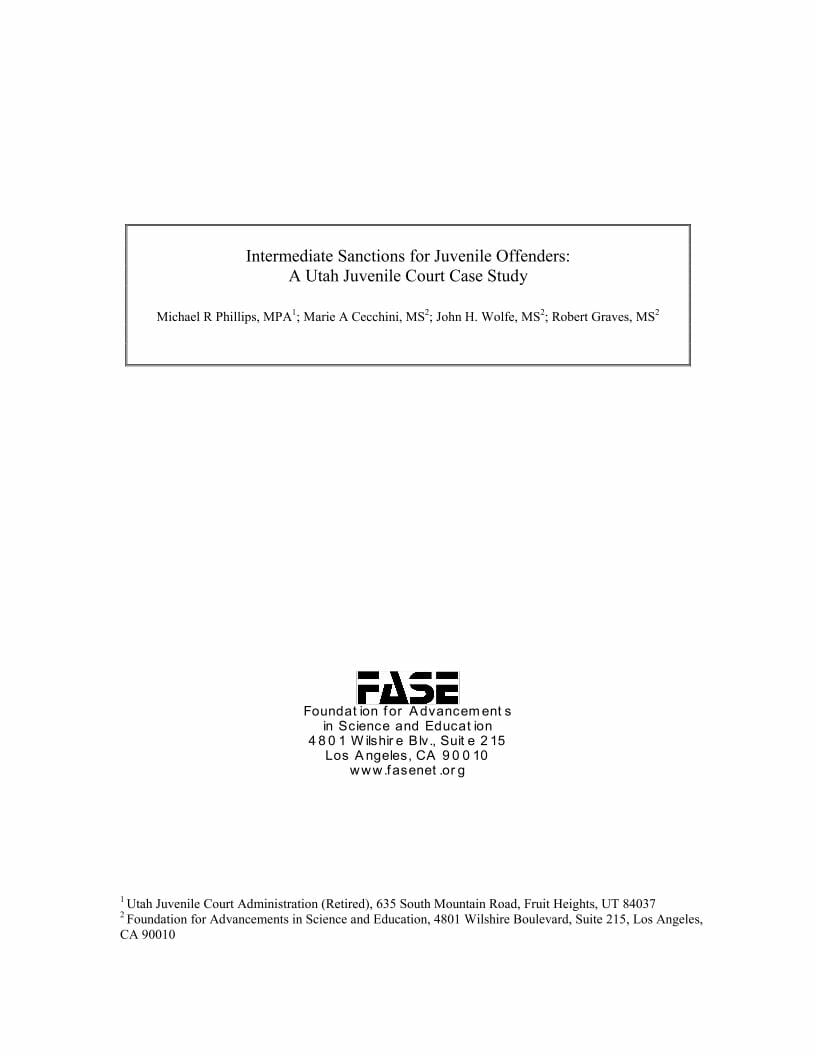FASE: Juvenile Court Case Study
Michael R Phillips, MPA
Marie A Cecchini, MS
John H. Wolfe, MS
Robert Graves, MS
JANUARY, 2005

Summary
In an effort to reduce juvenile recidivism – the return to criminal behavior after leaving the juvenile court – authorities in Utah adopted a new statewide intermediate sanction system in which each district could choose a treatment component. Noting the high rate of substance abuse among juvenile offenders, the Fourth District Juvenile Court chose to implement the Narconon drug rehabilitation program through a Utah licensed not-for-profit called NewLife, integrating it within court-directed probation services.
The Narconon program, an outpatient service based on secular materials developed by L. Ron Hubbard, consists of a series of modules to address physical aspects of substance abuse as well as underlying social and life skills that may be deficient in young abusers. Participants complete a detoxification program designed to eliminate drug cravings by improving nutritional status and reducing body stores of drug residues. The detoxification regimen includes exercise, sauna and vitamin-mineral supplementation. The Narconon program also includes self-paced training in study habits and communication (oral and written). Additional training materials address the subjects of moral and ethical standards, how to set and achieve goals, and personal responsibility.
This program was implemented in partnership with court officials and probation officers in the Fourth District Juvenile Court, in the context of implementing new juvenile sentencing guidelines for State Supervision. The court hoped to reduce the rate at which these youths penetrated deeper into the justice system, and to achieve a reduction in placement costs.
It should be noted that the District had saved “the worst of the worst” for this trial program (knowing in advance it was coming several months prior to its implementation). More than half were candidates for confinement or community placement (removal from their homes) rather than state supervision, the new sentencing guideline’s last-chance sanction. This tracking report examines the extent to which the court’s goals were achieved. It does not attempt to identify or explore positive or negative factors outside of the Narconon program that might have contributed to the outcome.
Participants in the Narconon program, whether they completed the program or not, showed a 77.7 percent reduction in criminal activity. Program completion intensified the desired change of behavior. Seventy-four of the 100 juveniles completed the intervention. Of these, 63.5 percent remained completely misdemeanor and felony free for the remainder of their juvenile history. Based on a combined analysis of juvenile and adult records, 32.4 percent retained this crime-free state for four years post-treatment.
A placement analysis revealed that the goal of reducing placement and related costs was also achieved. The success of this partnership suggests new possibilities for treatment and intervention and for reducing costs associated with juvenile crime.


